The genus phalaenopsis, which got its name for its similarity to a moth, is in most cases represented by epiphytic plants from the Orchidaceae family. Beautiful butterfly orchids, being very popular, are often presented as a gift to not always experienced gardeners who know that care for phalaenopsis at home after the store plays an important role for the further life of the flower.
Material Content:
The adaptation period of the Phalaenopsis orchid after the store

Often the new owner of an orchid is faced with a situation when, even in the store, a flowering plant, upon arrival at a new home, began to drop buds and blossoming flowers. This is a natural process of adapting a flower to new conditions of detention. The main task of the grower is to minimize stress and create optimal conditions for the speedy acclimatization of the plant.
Quarantine conditions
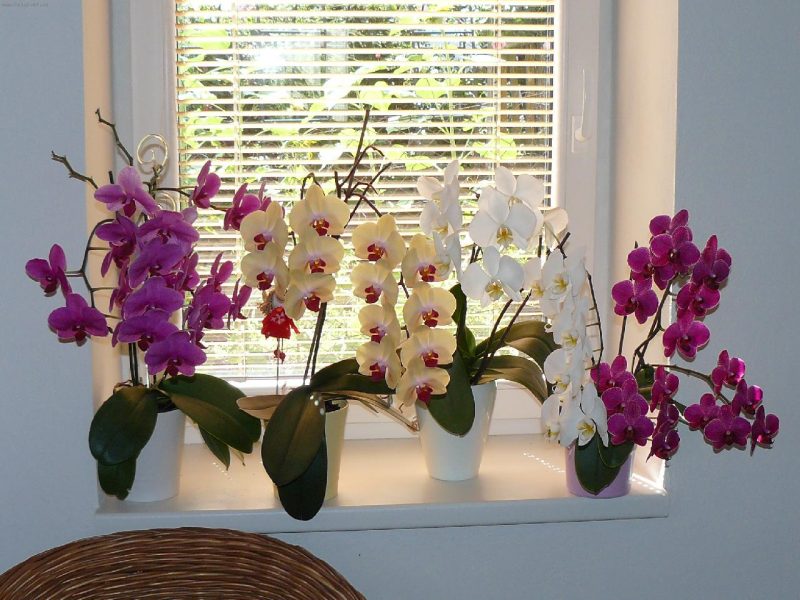
After the flower enters the house, it is necessary to quarantine it for 2-3 weeks, thereby protecting other indoor plants from the possibility of infection by harmful organisms.
During this period, the main quarantine conditions must be met:
- systematic monitoring of the state of the plant;
- timely processing of orchids when detecting diseases or pests.
Do I need an orchid transplant after the store?
If examination of the plant showed that the phalaenopsis orchid is healthy (the roots are not affected by rot, there are no black leaves, the substrate is not flooded), then the transplant should be delayed: carry out the procedure after flowering is completed. However, there is a situation when a radical solution cannot be dispensed with: if half of the roots are affected by rot, then the plant must be transplanted into a new substrate, having previously removed all diseased areas and sprinkled them with an antiseptic. And at the bottom of the pot, placing drainage from expanded clay or polystyrene. If the disease develops too intensely, pruning of the peduncle may be required, which will help save the affected plant.
Soil and pot requirement

The need for the roots of the epiphytic phalaenopsis to be in the air and in the light makes it necessary to grow the flower in a glass, transparent and stable container filled with a special light substrate. Mixture for orchids can be purchased ready-made in a flower shop or prepared independently from such components as finely and medium-sized bark, as well as moss in equal shares.
Advice! Since dry bark has a very good throughput, it should be soaked before swelling before being placed in a pot.
Phalaenopsis care after purchase
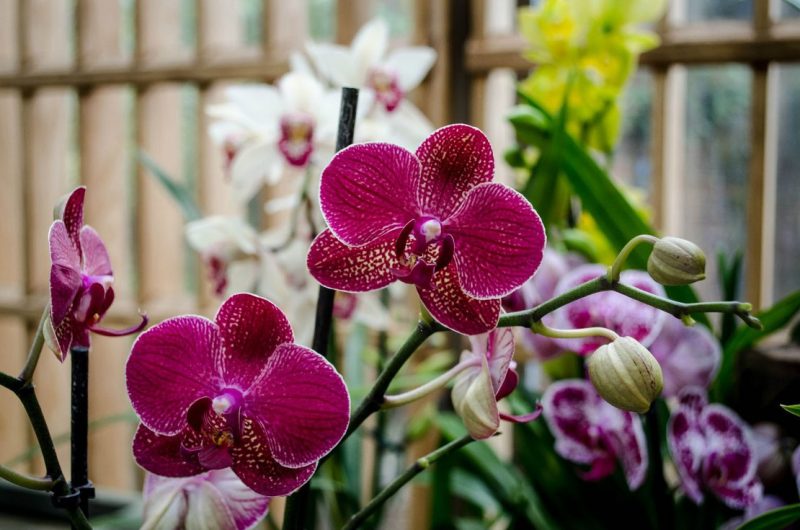
While the flower is acclimatizing in a new environment, it needs to be provided with appropriate care.
Lighting
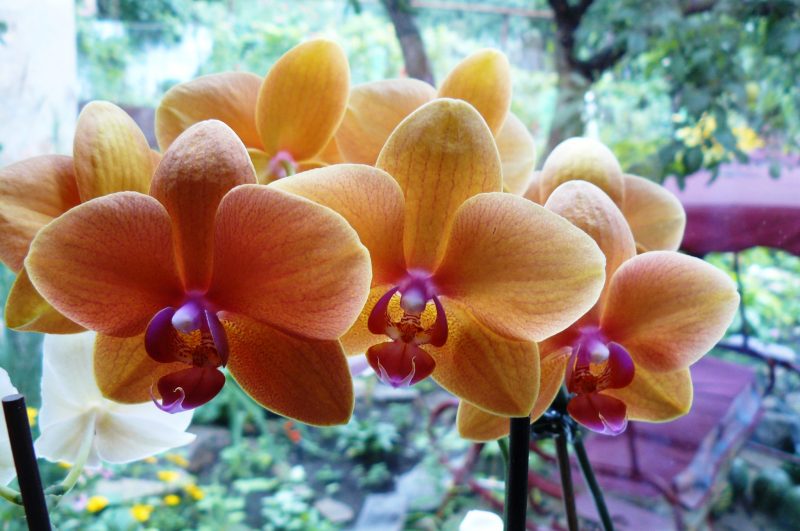
Blooming phalaenopsis does not need bright lighting and will feel great in the back of the room either with artificial lighting. In the future, it is recommended to move the orchid to the windowsill of the western or eastern window, where it will be provided with natural protection from direct sunlight of the active sun.
Temperature mode

For the first time after purchase, the plant needs the most comfortable temperature regime, the values of which can vary between 18-24 ° C. After flowering and the adaptation period, when the culture regains strength, it will be able to withstand a temperature increase to 42 ° C and a decrease to 12 ° C.
Watering and humidity
The frequency of watering depends on the type of plant acquired. If the florist has acquired an orchid of standard sizes, which is grown in the bark, it is enough to conduct lower watering once a week by placing the pot in a pan with water for 10 minutes. If the choice fell on the phalaenopsis-mini, then moistening is carried out more often, which is associated with a smaller volume of capacity and a substrate from moss. Make sure that the substrate dries out a little between waterings.
Attention! According to experienced gardeners, for the successful cultivation of phalaenopsis-mini, you should not adhere to the rule of alternating watering and drying, which is relevant for varieties of standard sizes.
Fertilizer and fertilizer
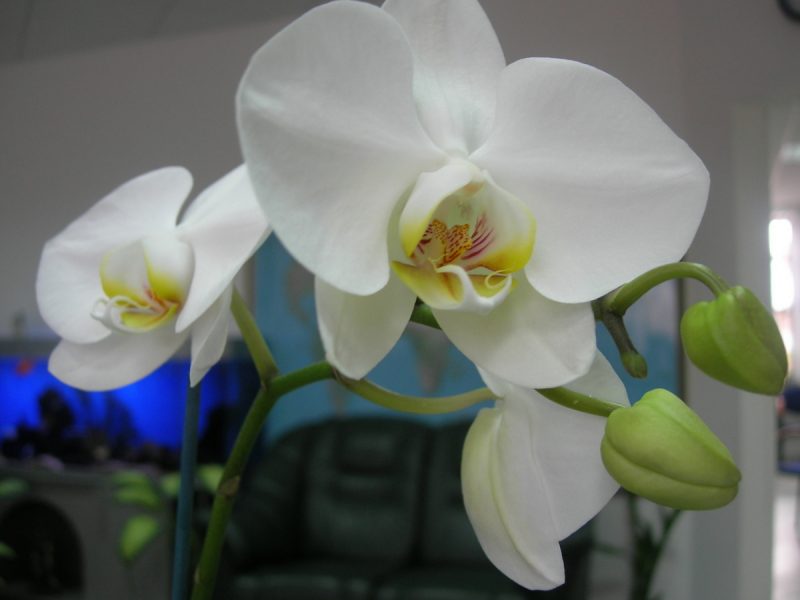
It is not recommended to feed phalaenopsis after acquiring and changing the conditions of detention. An epiphytic plant can bloom for a long time without regular top dressing. However, to ensure full development, it is worth periodically introducing slightly concentrated mineral fertilizers for flowering plants - the concentration is 3 times less than indicated on the package.
Rules for care after flowering
Upon completion of flowering, the flower grower must monitor the condition of the peduncle. If the arrow turns yellow and begins to fade, it is cut off. However, when the type of peduncle does not change (it retains a green color) - this indicates that after resting flower buds will be laid on it. In such circumstances, the arrow must be shortened: pruning is carried out 1 cm below the developed kidney.
Orchid pests and methods for controlling them
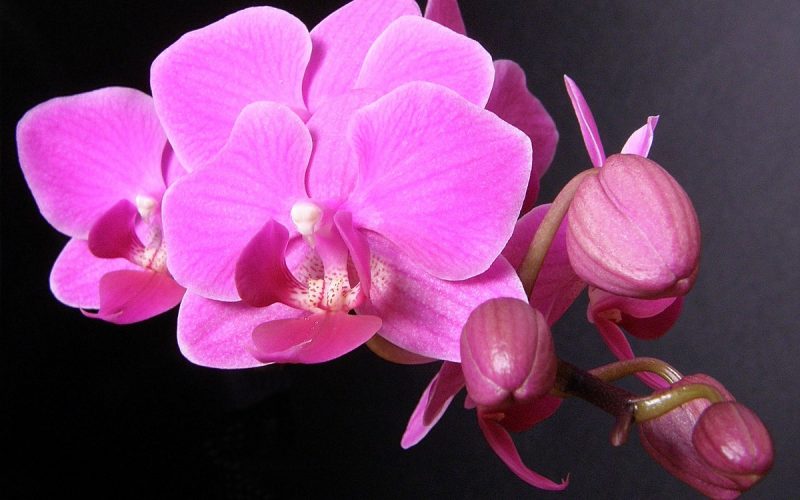
In violation of the rules for the care of phalaenopsis, the orchid is affected by various diseases, most of which are of an infectious nature:
- Fusarium disease - a disease whose development is associated with excess moisture, cannot be cured. The diseased specimen must be destroyed in order to protect other plants.
- Rot, anthracnose, spotting - diseases, the cause of which also lies in excess moisture, must be treated with a double treatment with a fungicidal solution according to the instructions indicated on the manufacturer's packaging.
- Urticaria - with a violation of the temperature regime and the absence of fresh air flow, the leaf plates become covered with spots with a diameter of 3 cm. Normalization of the conditions of detention allows you to stop the development of the disease.
- Bitrix - the disease is manifested by the spotting of flowers, which gradually fade. The best protective measure will be compliance with agrotechnical care requirements.
In addition to diseases, an overseas beauty can be attacked by such pests as a spider mite, thrips, scutellum, and mealybug. In the fight against the above insects, the chemical drug Actellik or another insecticide of a similar action will come to the rescue.
Propagation of the Phalaenopsis orchid at home
At home, a tropical plant propagates vegetatively - with the help of side shoots that have developed on the arrow or at the base of the rosette of leaves. But the formation of such processes is a sign of violation of the rules for care.

Therefore, if a grower competently approaches the cultivation of phalaenopsis, then he will have to artificially stimulate the formation of children:
- When flowering has stopped, there is a sleeping bud at the base of the peduncle.
- With a sharp instrument, the edge of the scale that covers the kidney is cut in a semicircle.
- With tweezers, the scales are completely removed.
- The growth regulator is processing the kidney.
- After the formation of leaflets after 3 months, air roots form.
After 1.5 months after flowering, when the children are already sufficiently developed, you can proceed to the procedure of reproduction:
- Near the base of the leaf outlet or on the arrow, a baby is separated with aerial roots and at least two leaves.
- Within 24 hours, the shoot is dried, after which it is placed in a small-fraction bark.
- The pot with the planted baby is covered with a glass jar to create greenhouse conditions.
- Systematically, the can is removed for ventilation and watering.
- When a new instance takes root, the glass shield is removed.
The main problems when growing plants
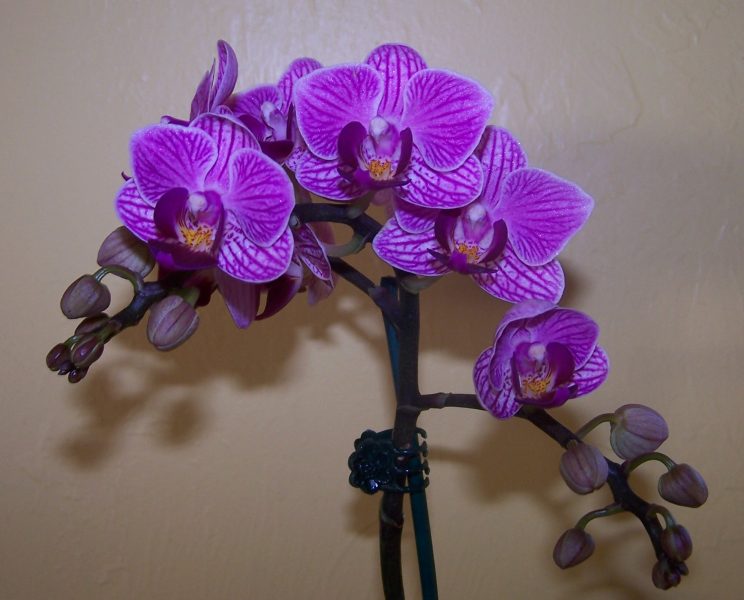
Beginner gardeners who decide to try their hand at orchid cultivation often have difficulties.
Phalaenopsis does not bloom
Between blossoms a minimum of 3 months should pass.
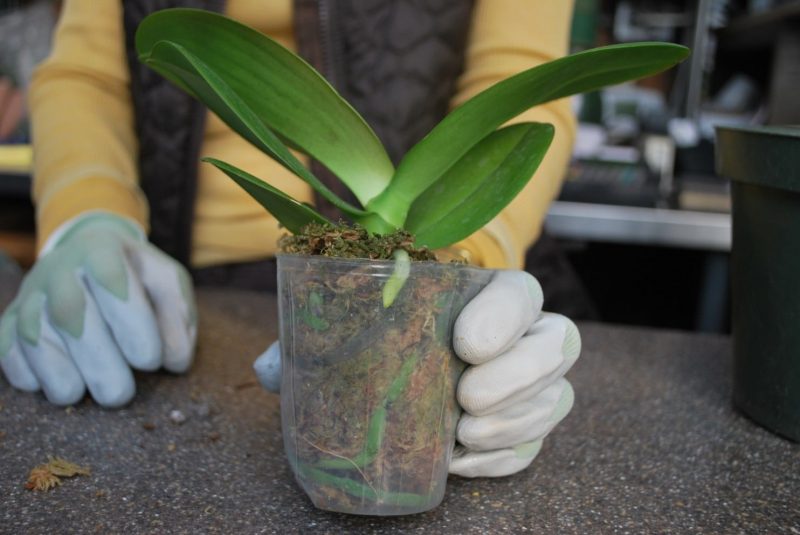
However, if, after the specified time has passed, the phase has not arrived, the reason should be sought in the following:
- lack of lighting;
- an excess of nitrogen;
- insufficient interval for rest.
The reason for the yellowing and drying of the leaves
This result is possible when growing a culture with violations:
- irrigation systems;
- lighting mode;
- preventive measures to protect against diseases and pests.
Thus, if you buy or receive phalaenopsis as a gift, the newly minted owner of an overseas beauty will follow simple rules for her maintenance during the adaptation period and for further care, the butterfly orchid will become a permanent resident of his home.












